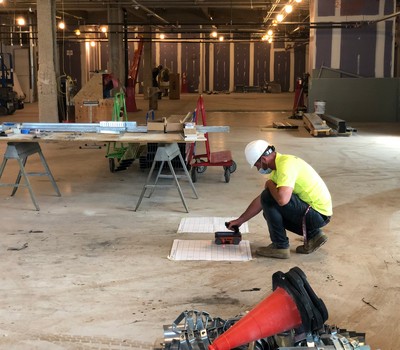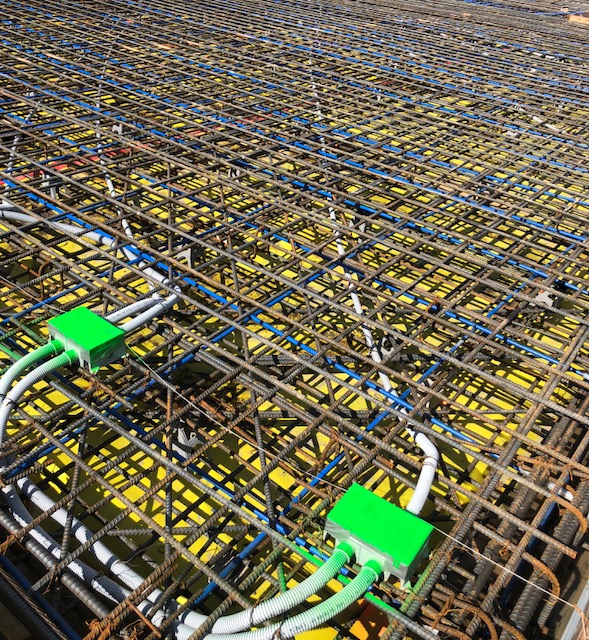Harness the Strategic Edge of Concrete Scanning for Unparalleled Project Success and Quality Control
In the world of modern-day construction and facilities growth, the application of concrete scanning technology has emerged as a critical device for making certain project success and maintaining high quality requirements. The real power of concrete scanning lies not only in its capability to enhance project outcomes but likewise in its capability to change traditional practices, setting a new benchmark for precision and effectiveness in the construction industry.
The Significance of Concrete Scanning
Concrete scanning is an important action in construction tasks to ensure the safety and integrity of structures. By making use of numerous scanning modern technologies such as Ground Permeating Radar (GPR) and electro-magnetic induction, construction groups can non-destructively review the subsurface of concrete structures to identify prospective hazards like rebar, conduits, or post-tension cables. This information is crucial for task professionals, managers, and designers to make enlightened decisions and stay clear of expensive mistakes throughout the building and construction process.
One of the key reasons that concrete scanning is so vital is its capacity to avoid accidents and injuries on the building and construction site. Accidentally reducing through a real-time electric channel or harmful post-tension cables can have tragic repercussions, not just in regards to security but likewise in regards to project hold-ups and financial effects. By carrying out comprehensive concrete scanning prior to any boring, reducing, or coring activities, building teams can alleviate threats and create a more secure working environment for everybody entailed.
Along with security factors to consider, concrete scanning also plays an essential duty in ensuring the long-lasting durability and high quality of the framework. By detecting any type of problems or abnormalities concealed beneath the surface, such as spaces or delamination, very early treatment can be implemented to deal with these problems prior to they intensify into even more significant problems. Eventually, purchasing concrete scanning is a positive measure that can save time, money, and resources in the long run, while likewise promoting the highest possible standards of building quality.
Advanced Innovation for Specific Outcomes

By incorporating these innovative innovations into concrete scanning methods, building teams can improve workflows, reduce job hold-ups, and make sure the general quality and success of the project. The accuracy and effectiveness provided by these tools contribute significantly to the task's success by promoting notified decision-making and improving top quality guarantee procedures.
Enhancing Project Efficiency and Timelines

Additionally, concrete scanning makes it possible for groups to recognize possible threats and architectural weak points early on, permitting punctual removal and protecting against crashes that could thwart task timelines. The real-time information supplied by scanning devices assists in notified decision-making, resulting in smoother sychronisation among different professions and stakeholders. This boosted partnership lessens disputes, improves productivity, and ultimately increases task shipment.
Additionally, by proactively addressing concerns with concrete scanning, building and construction groups can follow timetables better, decrease downtime, and optimize source appropriation. The capability to discover covert barriers and confirm structural honesty successfully contributes to overall task effectiveness and timelines, ensuring effective outcomes and customer contentment.
Ensuring Security and Risk Reduction

Threat mitigation strategies can be improved through the thorough info provided by concrete scanning, making it possible for task teams to make enlightened decisions that lower the possibility of unexpected occurrences. Additionally, by accurately drawing up subsurface conditions, service providers can prevent pricey rework, delays, and damages to existing frameworks, even more contributing to general task security and success. Applying concrete scanning as a routine practice not just ensures a safer workplace however additionally instills confidence in stakeholders pertaining to the project's commitment to high quality and risk administration.
Quality Control With Concrete Scanning
Concrete scanning plays a crucial role in supporting quality control standards within building tasks. By making use of advanced scanning innovations such as Ground Permeating Radar (GPR) additional reading and Concrete X-ray, task supervisors and designers can ensure the integrity and quality of concrete frameworks. With concrete scanning, possible issues, such as voids, fractures, or enhancing bar congestion, can be detected non-destructively, allowing for prompt treatments to keep the architectural honesty of the project.
Quality assurance with concrete scanning not only assists in determining existing issues but also makes it possible for proactive measures to prevent future problems that can endanger the safety and security and long life of the framework. By carrying out thorough scans at key stages of building and construction, groups can confirm the accuracy of structural plans, validate the placement of crucial elements, and address any kind of inconsistencies immediately. This positive method minimizes rework, lowers costly hold-ups, and eventually results in the delivery of high-quality, sturdy frameworks that meet or exceed industry criteria.
Final Thought
To conclude, concrete scanning plays an essential role in making sure job success, safety and security, high quality, and effectiveness assurance. By using advanced modern technology for exact outcomes, building tasks can be completed with higher precision and within timelines. The tactical side provided by concrete scanning enables proactive risk mitigation and enhances general job management. Integrating concrete scanning right into building and construction processes is crucial for accomplishing unmatched success and guaranteeing quality outcomes - RainierGPR Concrete Scanning.
In the world of modern construction and infrastructure development, right here the utilization of concrete scanning technology has emerged as a critical tool for guaranteeing job success and maintaining quality standards. By incorporating these innovative modern technologies right into concrete scanning practices, construction groups can simplify process, decrease project delays, and make certain the total high quality and success of the task.Provided the imperative nature of task performance and timelines in building management, the emphasis currently moves in the direction of guaranteeing safety and mitigating threats within the job environment.Concrete scanning plays a crucial function in supporting quality guarantee criteria within building projects. By making use of sophisticated scanning technologies such as Ground Passing Through Radar (GPR) and Concrete X-ray, project supervisors and engineers can ensure the stability and high quality of concrete frameworks.